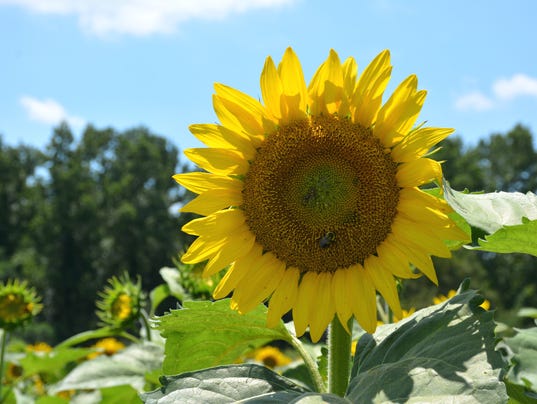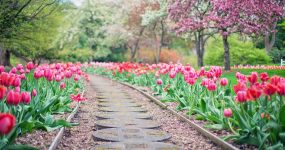It’s only 59 days until March 20, the first day of spring. Have you examined your garden yet to begin plans for improvement? Or, have you considered how your landscape might be updated to enhance your life? If not, then let me share what I’m reading about garden trends for 2018.
First, gardening is on the rise. It’s estimated that roughly six million new gardeners joined our ranks in the past year alone and the great majority were millennials (ages 18 to 34). It’s good to know that younger gardeners are picking up the trowel and that their “rooted-in-nature” ideas and views will help shape the future.
Industry leaders, from media sources to plant companies, have been consistent in choosing themes related to “good health” for the trends of 2018. The Garden Media Group, naming 2018 as “Nature’s RX for Mental Wellness,” says discontent, depression, and anxiety are skyrocketing and notes that the World Health Organization predicts anxiety will be the number one health issue by 2030. It’s no surprise, either, to hear that young people are the most stressed of all.
Here, then, are a few of those trends emphasizing health and wellness for the coming year, including some I hope you will consider for your own garden.
Garden Design Magazine predicts gardeners will continue to experiment with what they grow, especially new edibles such quirky melons and exotic greens, adding variety to their diet and more fun to their gardening efforts. New-to-you plants also include flowers that attract and nurture pollinators, as well as houseplants that clean the air and create a more relaxing environment indoors.
The magazine notes, too, that gardeners are putting more thought into their winter landscapes, pushing the seasonal boundaries for color and texture when the garden is typically at its low ebb. Suggestions include evergreens that change color in winter, deciduous woodies with colorful or peeling bark, and early bloomers that offer their flowers in late winter.
Monrovia, a plant wholesale company, sees “an unequaled demand for unique, sustainable, and social share-worthy plants,” pointing to suburban plant hunters who want plants that no one else has. From heritage fruit trees to “who-knew” annuals, they predict gardeners will look far and wide for species that create customized havens, rather than cookie-cutter spaces. At least some of those plants are likely to have patterned foliage, as a huge increase of “saves” on Pinterest feature leaves with dots, dashes, stripes, and slashes.
Pointing to a greater interest in shrubs as gardeners simplify, Monrovia also predicts hydrangeas will cement their status as the plant of the decade in 2018 with a slew of new varieties that are the perfect size for pots, have sturdier stems that don’t flop, thicker leaves tolerant of wind and heat, and offer other improved characteristics that solve consumer problems.
The Garden Media Group notes a trend in growing your own protein, saying that 23 million Americans now identify as flexitarian (a person who is primarily vegetarian but occasionally eats fish or meat) and that 38% say they go meatless at least once per week. The best protein-rich foods to be grown at home include edamame, peas, quinola, broccoli, corn, asparagus, spinach, kale, millet, and sunflower seeds.
The group also notes water elements in the garden, from pools to rainscapes, are more important than ever, pointing to the overwhelming response to Longwood Gardens’ $90 million, two-year fountain renovation, plus the “Wonders of Water” theme chosen for the 2018 Philadelphia Flower Show to be held in March. Personally, this is news I’m happy to hear, as I’m planning to add another water feature to my own garden soon.
The trend that excites me most, however, is the idea of “imperfect gardening” or embracing the ancient Japanese practice of wabi-sabi — the appreciation of imperfection in life and the ability to age gracefully. Repurposing old objects, utilizing natural materials, leaving seed heads for foraging birds and clover for hungry bees, and finding other ways to honor the delicate balance between nature and nurture, is something I hope all gardeners will strive for in 2018.
[“Source-greenvilleonline”]



























